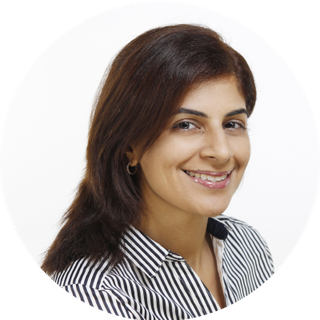CAAS and Aireon pair up to improve aircraft tracking
They plan to look into using a space-based technology within the Singapore Flight Information Region so that airspace can be more efficiently - and safely - used

Singapore
THE Civil Aviation Authority of Singapore (CAAS) and air-navigation services provider Aireon have inked a memorandum of agreement to look into improving aircraft tracking within what is called the Singapore Flight Information Region (FIR).
This tracking is to be done using the space-based Automatic Dependent Surveillance - Broadcast (ADS-B) service within the Singapore FIR.
The International Civil Aviation Organisation (ICAO) defines an FIR as that defined airspace within which flight-information and alerting services are provided.
Some parts within the Singapore FIR, such as remote areas and airspace over oceans, now fall outside surveillance coverage, which requires air-traffic controllers to allocate greater distances between planes in the interest of safety.
With ADS-B, real-time positions and en-route status information can be tracked for aircraft equipped with ADS-B transmitting equipment and which are flying within the Singapore FIR. This technology means that the separation between aircraft can be reduced without sacrificing safety, which in turn boosts airspace capacity and eases congestion.
ADS-B is also said to be able to pinpoint positions more accurately and consistently than existing ground-based radar technology, which offers only patchy coverage in certain situations.
Under the collaboration, CAAS and Aireon will establish the needs of the Singapore FIR as well as the region, craft policies, standards and procedures for using ADS-B, as well as look at how best to adopt the service to improve air traffic-management services in the Singapore FIR and the region.
CAAS' director-general Yap Ong Heng said: "We are constantly looking for new and innovative solutions to enable us to provide better air-traffic services in the Singapore FIR. This new space-based ADS-B capability represents the next level of surveillance capability and will complement our existing ground-based air-traffic surveillance systems."
He added that the technology, coupled with optimal operational procedures, could also help cut fuel expenses for carriers and at the same time, boost flight efficiencies.
The CAAS-Aireon memorandum of agreement was signed on Wednesday, on the sidelines of ICAO's High Level Safety Conference in Canada. At the event, ICAO's 191 member states discussed measures to enhance aircraft-tracking capabilities in the wake of last year's disappearance of Malaysia Airlines flight MH370. The aircraft, which was carrying 239 people, is still missing.
Don Thoma, president and chief executive of US-based Aireon, said: "This agreement is an extremely important step forward in ensuring safe, efficient and cost-effective air navigation services on a long-term, sustainable basis.
"Singapore is a leader in air-traffic management deployment and implementation, and we will be working closely with CAAS to explore and define how Aireon's capabilities can greatly improve aviation operations in the Singapore FIR and the region."
Singapore Airlines (SIA) is currently partnering air-transport communications firm Sita on trials related to aircraft tracking. While it did not divulge details on these trials, the carrier said it tracks the position of all its aircraft regularly, using systems such as aircraft-communications addressing and reporting system (ACARS) and surveillance data.
SIA added that all its aircraft are equipped with ADS-B.
At ICAO's safety conference, it was recommended that aircraft adopt a new standard which requires them to report their position in 15-minute intervals while in remote areas, and every minute when under distress.
The media has reported that the ICAO Council is expected to ratify the proposal in November, which would make the new standard mandatory next year. The measure will be performance-based, which means carriers can leverage on existing or upcoming technologies of their choice.
ICAO Council president Dr Olumuyiwa Benard Aliu said: "In the longer-term, ICAO will also be developing requirements and assistance measures for abnormal and distress tracking, which require more time due to their complexity and potential reliance on new technologies."
Other issues discussed at the conference included improving safety for airlines overflying conflict-ridden zones - a pertinent issue in the aftermath of Malaysian Airlines MH17 being shot down over Ukraine by pro-Russia separatists last July.
One plan mooted is a web-based portal which will alert airlines, air-navigation service providers and member states to hotspots which pose a risk to flights.
Director-General of the International Air Transport Association (Iata) Tony Tyler said the association supported the initiative, but stressed the need for the information disseminated to be reliable and clear.
BT is now on Telegram!
For daily updates on weekdays and specially selected content for the weekend. Subscribe to t.me/BizTimes
Transport & Logistics
S&P slashes Boeing credit outlook as rating hovers above junk status
Honda to spend US$11 billion on EV strategy in Canada
India’s IndiGo gets into long haul game with Airbus A350 deal
Hertz reports US$392 million loss as it unwinds Tesla fleet burden
Changi Airport’s Q1 passenger movements surpass pre-pandemic levels
Toyota and Nissan pair up with Tencent and Baidu for China AI arms race
